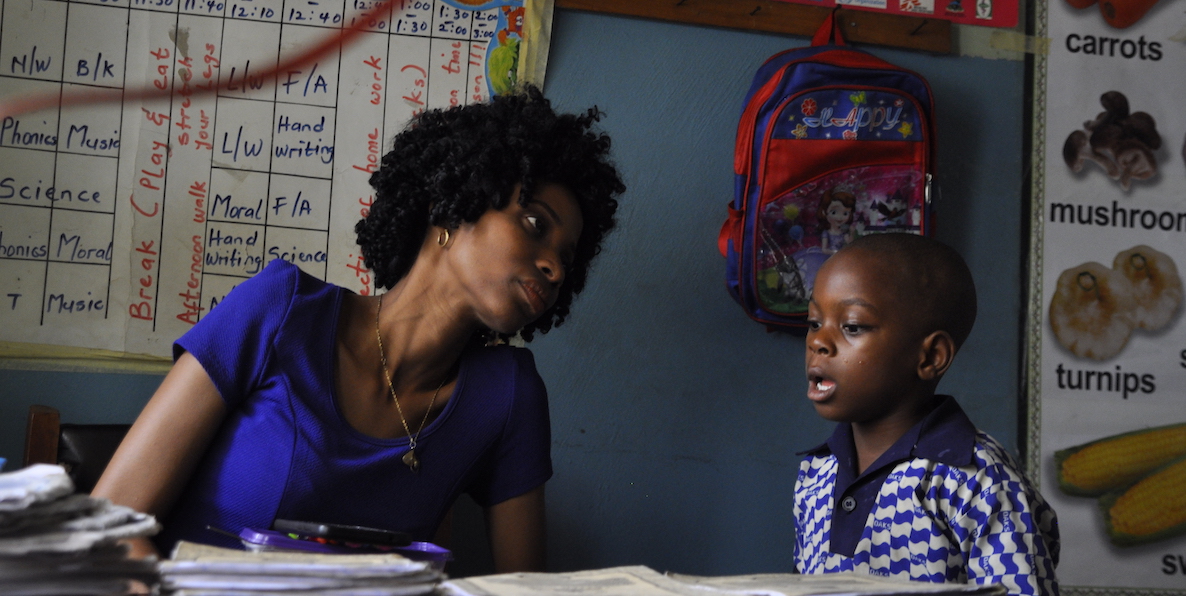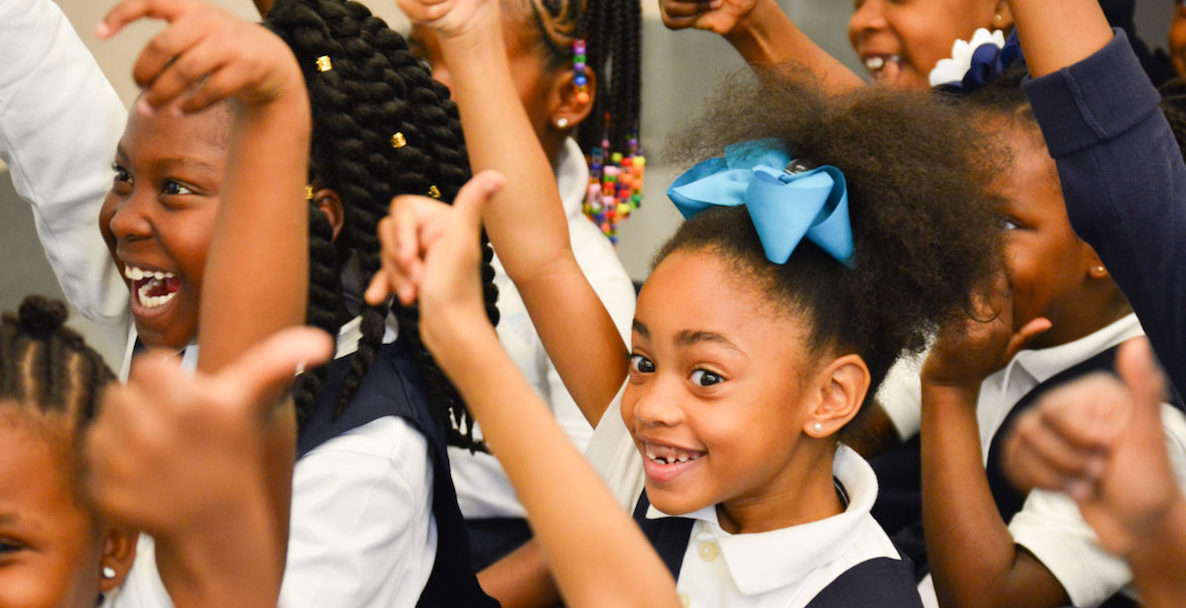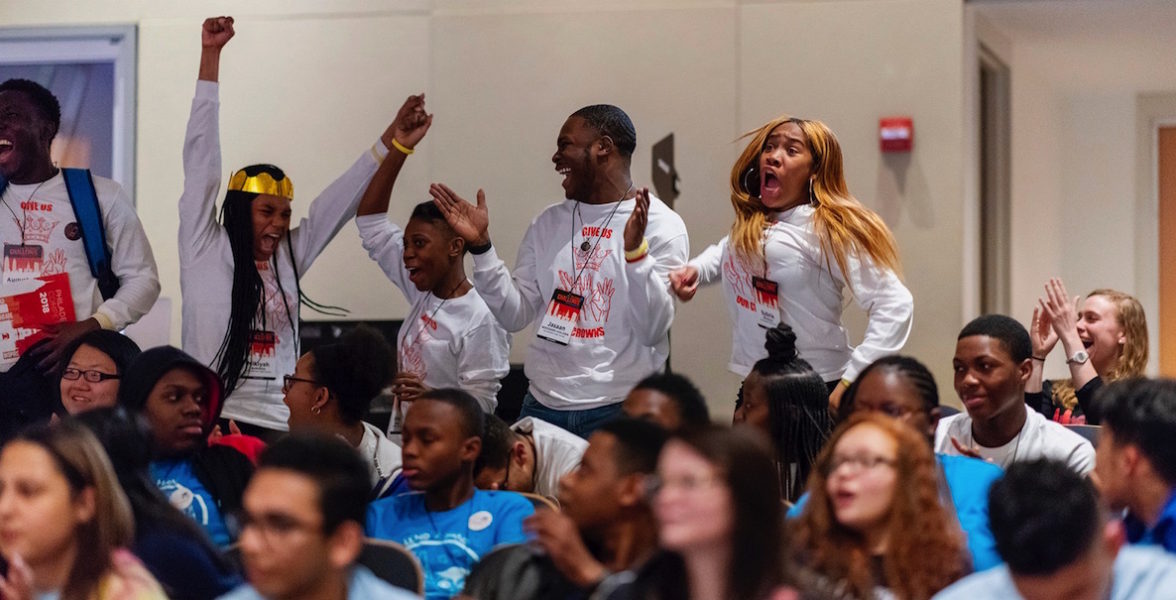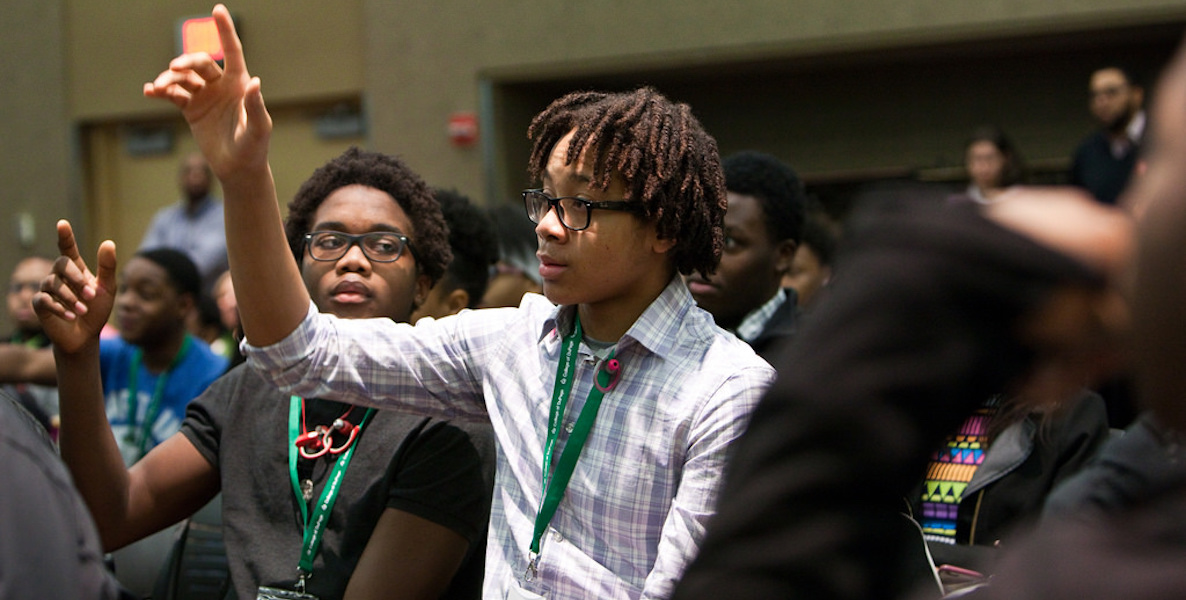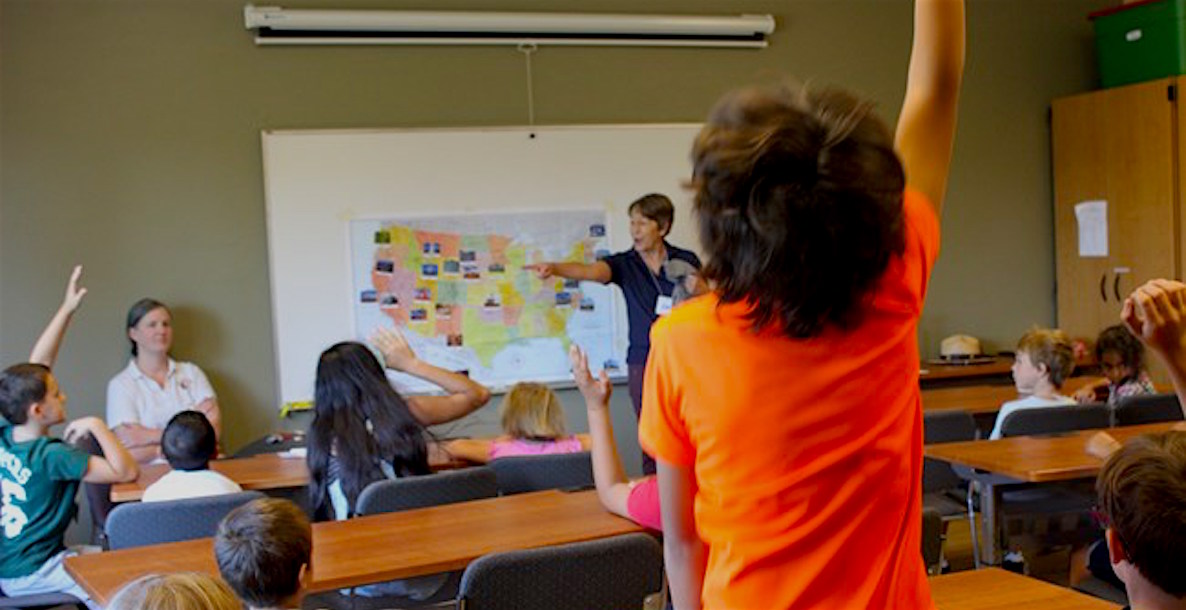As a first-year 5th grade teacher 15 years ago, I was told by my superiors and mentors to drill in the classroom rules and not to smile until the 2nd month of school. I recall allusions being made to the broken windows theory of crime—that I must respond quickly and decisively to even the most minor infractions in order to prevent utter chaos in my classroom.
I took all the advice I could get, utilized the red, yellow green stoplight behavior management system, and reviewed the rules constantly for weeks. It went okay. The students made modest gains. I was exhausted and did not feel I connected to my students or that I pushed them to their full ability.
The following year, I took a risk. I still had the stoplight system—it was required for all classrooms at my school—but I decided to introduce a different kind of system, one which leveraged the social and relationship needs of children. I adopted an approach from a book called Reaching All By Creating Tribes Learning Communities by Jeanne Gibbs.
Shifting a paradigm like this will take years and effort. But there aren’t any workarounds. We need a greater focus on teacher-student relationships if we want our children to develop into self-aware, curious, connected and confident adults.
Students were seated in groups, and the groups were charged with working together to help each member work to their potential. Recognition of pro-social behavior, such as being kind, offering help, or sharing, was given through tally points to each group that would accumulate to a certain number, at which time the reward would be a special activity with me.
To my amazement, the approach worked beautifully. The students got on board almost immediately, experiencing relief that they could help each other in addition to being responsible for themselves. The incentives were aligned to encourage them to think of the class as a community, rather than as each child for him or herself, as the stoplight system promotes.
I did not realize at the time that by leaning in to the natural relationship needs of my students, I had more time and space to get curious about those disruptive behaviors that inevitably come up. I did not have to feel like a warden, monitoring and shaping behaviors for compliance. Instead, I could trust my students and myself to be validating and caring.
![]()
I feel lucky that I happened across that book and that I had the wherewithal to take a chance with this different approach. But I do not believe this needs to be left to luck.
Had I been introduced to attachment theory and the skills embedded in creating secure attachment relationships, I would have had the tools and understanding to approach my first year of teaching with a relationships-based mindset. I often think back to missed opportunities to leverage the power of connection in order to understand, reach and motivate my students. I feel frustration that this humanistic and research-based paradigm regarding human relationships, learning, and behavior, was never introduced to me in teacher training.
This remains true 15 years later, as I have now seen through my own eyes as a parent of a Philadelphia public school kindergartener and from what I hear from friends across the region. Common features in public schools are: traffic light discipline that move clothesline clips to from green to yellow to red; star charts that offers prizes and privileges for accumulated “good” behavior; and “bad choice” chairs that are the modern version of shaming dunce caps of the past.
Even with the advent of trauma-informed approaches, classroom management still rests on a foundation of punishments and rewards in response to student behaviors. This is a standard behavioral approach that reflects what I learned from reading studies about pigeons and mice in my undergraduate behavioral psychology course. Only thing is, students are not pigeons or mice. They are humans with complex social needs.
As Lou Corzolino addresses in Attachment-Based Teaching: Creating a Tribal Classroom, the neuroplasticity in our brains—which facilitates learning—is enhanced by feeling safe, understood, and seen by important others in order to explore and take risks.
The good news is that nearly a century of research tells us how children (and all humans) learn best, and—spoiler—it’s not by dangling carrots or by shaming. As Lou Corzolino addresses in his excellent book Attachment-Based Teaching: Creating a Tribal Classroom, the neuroplasticity in our brains—which facilitates learning—is enhanced by feeling safe, understood, and seen by important others in order to explore and take risks. When those needs are not met, we freeze and hunker down to keep ourselves safe, and lack the capacity to expand our minds.
Attachment theory, which was developed by a psychiatrist named John Bowlby in the 1950’s and 60’s, is the foundation of what we know about how humans connect, learn and thrive. According to attachment theory, it is evolutionarily advantageous to seek closeness to caregivers, as it increases our chances of survival. We continue to need such proximity throughout our childhood. When our emotional needs do get met, because we have a responsive caregiver who is curious about our distress and seeks to make us feel valued and understood, we develop what is called a secure attachment style.
![]()
When our emotional needs do not get met—due to a host of reasons including abuse, neglect or traumatized caregivers—we develop strategies to emotionally survive, which may be confusing to others in the absence of information about our history. For example, a child who has been separated from her biological parents due to abuse, may present as detached and apathetic. Those are behavioral responses she learned in order to keep her safe from parents who would be easily angered.
Educators spend a great deal of time with students, and become proxy caregivers that children look to for safety and affirmation. When those teacher-student relationships are intact and healthy, students thrive. The research bears this out: Warm relationships between teachers and students lead to increased academic achievement, improved social development, reductions in conflict, and less teacher burn-out.
One can point to the many amazing teachers whose students achieve as a result of the strong relationships they developed with them. However, there remains a faulty belief in our society that relationship skills are an unteachable talent. Those amazing teachers probably were themselves nurtured from an early age, learning from their own lived experiences about how to connect with others, and, thus developed a secure attachment style. Not every educator starts from that same place, but they can learn how to develop secure connections; it’s not a matter of talent.
The faulty belief that relationship skills are intuitive or instinctual extends to teacher training. According to many teachers and professors of education there is little if any direct instruction for teachers around relationship skills and the science of how humans connect and learn. Instead, models of how to monitor and control student behavior is what many teachers are taught. That’s what I often experienced as a student and what I was instructed to utilize when I began teaching.
At Oxford University, which recently launched a $1 million research initiative on the subject, researchers have found that teachers and aides are more effective and satisfied after training in attachment-awareness, and students showed both social and academic improvements.
Meaningful investment can and should be made in training teachers and school personnel in relationship skills and attachment theory. I know these skills can be taught and applied, and I know they work to enhance learning and achievement. I know because I learned these skills myself, during my graduate training in clinical psychology and I apply them through my work as a psychologist.
A focus on student-teacher relationships in schools has taken hold in other parts of the world where a deep well of research and knowledge regarding how humans connect and thrive is being applied in educational settings. In England, some schools have adopted programs in what is called “attachment-awareness.” At these schools, teachers and teacher aides learn the basic building blocks of relationships, how to identify children who have lacked safe, secure early caregiving or have experienced loss and trauma, and how to effectively respond to their behaviors. Rather than take an exclusively trauma-focused approach, which can inadvertently pathologize students, these educators are trained to recognize all behaviors as attempts to get relationship needs met. With the ability to understand attachment, they are taught interventions and tools to help them respond most effectively.
Research results on the impact of incorporating attachment-awareness at the school level are promising. At Oxford University, which recently launched a $1 million research initiative on the subject, researchers have found that teachers and aides are more effective and satisfied after training in attachment-awareness, and students showed both social and academic improvements. An attachment-aware approach could provide a desperately needed guide for educators seeking a better way to connect and teach.
While school systems invest in technology and curriculum, the greatest returns just might come in developing educators’ relationship skills, through an approach like attachment-awareness. Rather than being passive receptacles for academic facts, students are social beings that need to feel emotionally safe, validated, and worthy in order to learn.
The research exists—we know that secure attachment relationships between educators and students facilitate learning. It is not a quick-fix; shifting a paradigm like this will take years and effort. But there aren’t any workarounds. We need a greater focus on teacher-student relationships if we want our children to develop into self-aware, curious, connected and confident adults.
Keren Sofer is a licensed psychologist with a private practice in Philadelphia, who has taught at the elementary, middle school, undergraduate and graduate level.
Photo: National Park Service


